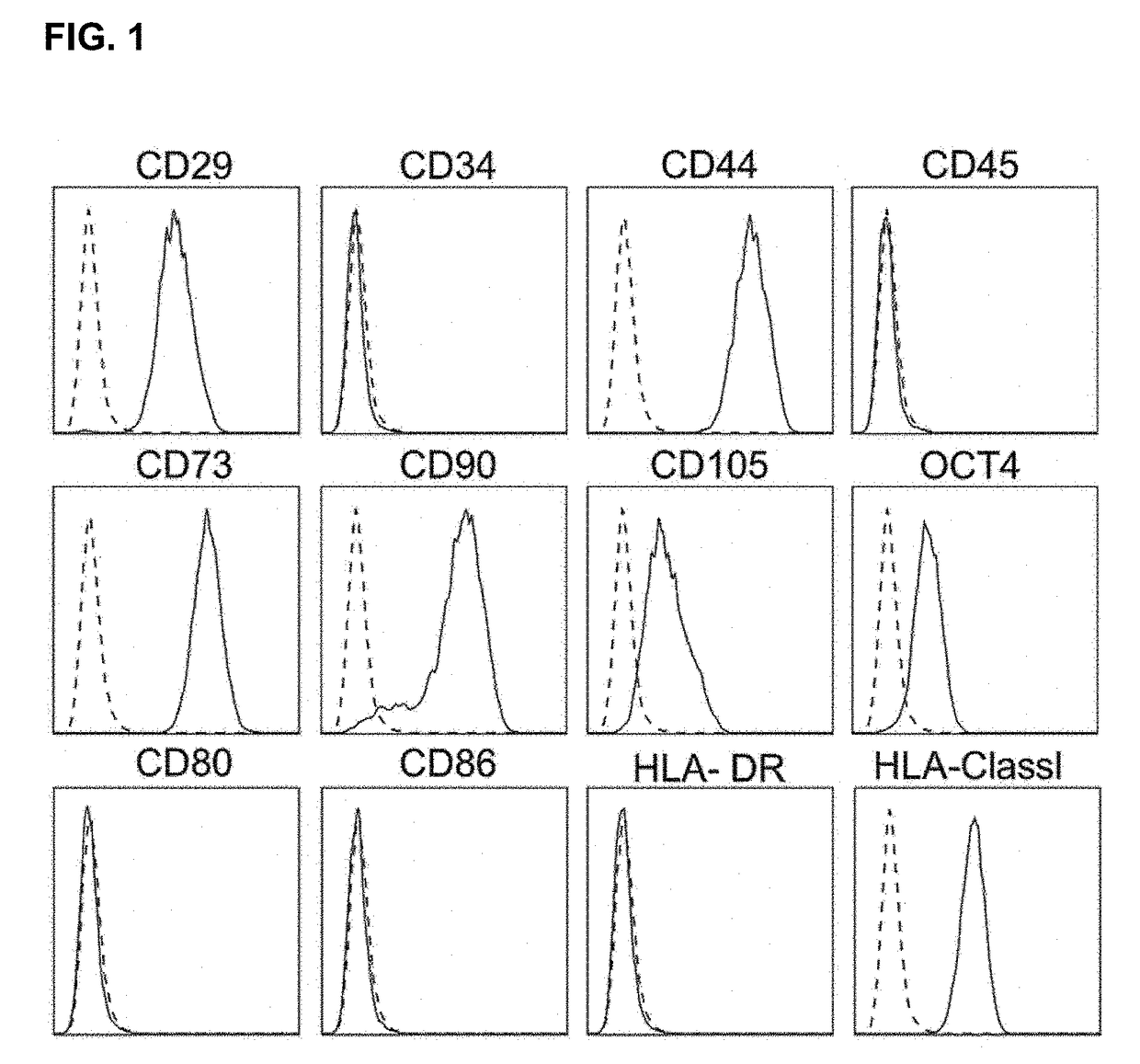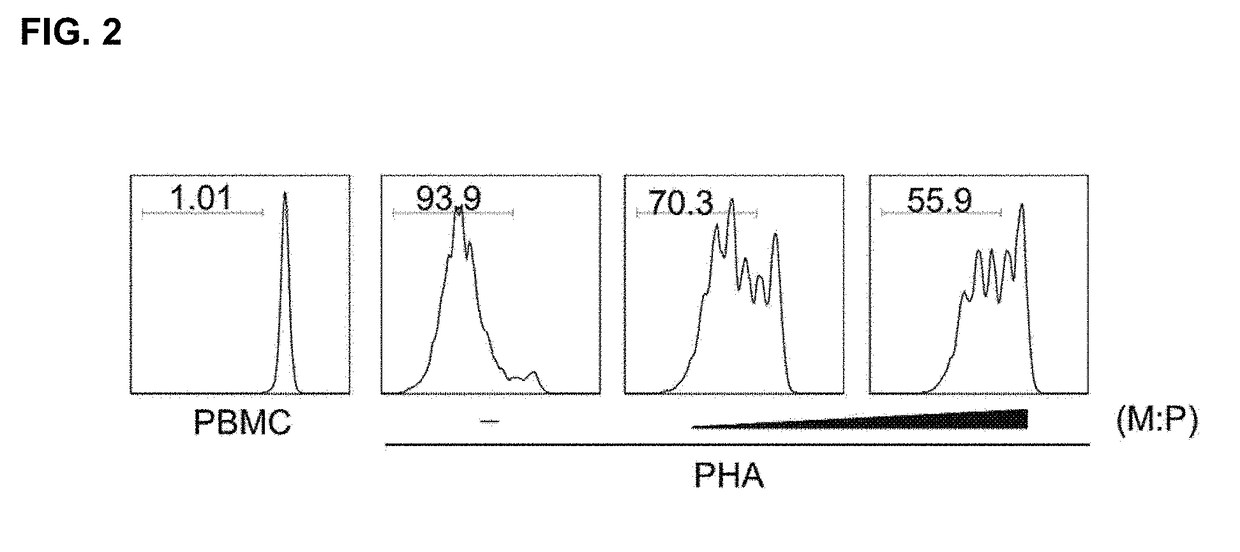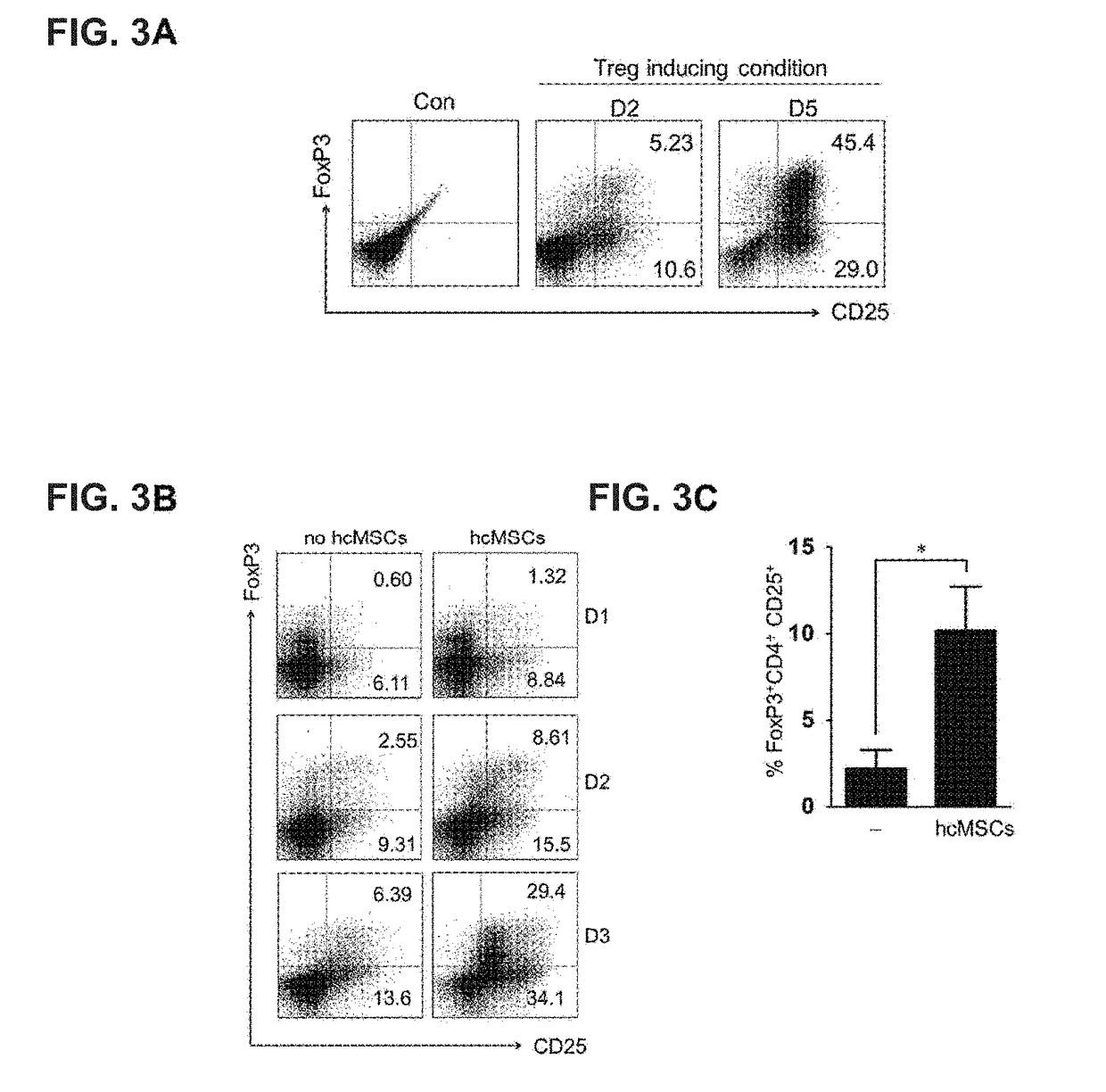Pharmaceutical composition for preventing or treating regulatory t cell-mediated diseases
a technology of t cell-mediated diseases and pharmaceutical compositions, which is applied in the direction of drug compositions, cell culture active agents, skeletal/connective tissue cells, etc., can solve the problems of little known about the specific regulator or action mechanism, and achieve the effect of effectively inhibiting the proliferation of pbmc, preventing, treating or ameliorating t cell-mediated diseases
- Summary
- Abstract
- Description
- Claims
- Application Information
AI Technical Summary
Benefits of technology
Problems solved by technology
Method used
Image
Examples
example 1
Analysis of Characterization of Human Clonal MSC (hcMSC)
[0064]Human bone marrow was collected from a healthy male donor. The experiment was performed according to approval by the Institutional Review Board of Inha University Hospital (IRB #10-51). The hcMSCs were isolated by the subfractionation culturing method according to the prior document (Song S U, et al. (2008), Variations of clonal marrow stem cell lines established from the human bone marrow in surface epitopes, differentiation potential, gene expression, and cytokine secretion. Stem cells and development 17(3):451-461.). All hcMSCs were incubated in Dulbecco's modified Eagle's medium (DMEM) with low glucose supplemented with 10% fetal bovine serum (FBS) and 1% penicillin / streptomycin. The isolated hcMSCs were analyzed by flow cytometry to identify various cell surface markers. The antibodies used for the analysis are as follows: anti-CD29 (Serotec, Kidlington, UK), anti-CD44 (Serotec), anti-CD105 (Serotec), anti-CD34 (BD B...
example 2
Identification of Induction of Tregs Differentiation by hcMSC
[0068]Peripheral blood mononuclear cells (PBMCs) were collected from healthy donors and separated by ficoll-hypaque density gradient centrifugation. CD4+ T cells from PBMC were obtained using CD4+ T cell Isolation Kit MicroBeads (Miltenyi Biotech, Bisley, Surrey, UK).
[0069]In order to identify the Treg differentiation, isolated CD4+ T cells were incubated in a complete medium containing RPMI 1640 supplemented with 10% FBS, 2 mM L-glutamine and 100 U / mL penicillin In a 24-well plate, the wells were coated with 1 μg / mL anti-CD3 monoclonal antibody at 4° C. overnight. Further, purified CD4+ T cells were stimulated by anti-CD3, anti-CD28, IL-2, TGF-b1 and atRA, which was a condition for Treg differentiation. In order to identify Treg differentiation, FoxP3 and CD25 expression was confirmed at day 2 and day 5.
[0070]In order to confirm the relationship between Treg induction and hcMSC, CD4+ T cells were co-cultured with hcMSCs o...
example 3
Identification of Contact-Dependent Induction Effect of hcMSC
[0072]hcMSCs were co-cultured with CD4+ T cells, and the appearance of these cells was confirmed by a light microscope (×400). The cells were classified into adherent or floating type depending on the presence types. Their CD25 and FoxP3 expression levels were compared by flow cytometry.
[0073]As illustrated in FIG. 4, it was confirmed by a light microscope that CD4+ T cells were present in an adherent or floating type (A). Some CD4+ T cells were in contact with hcMSCs and the adherent CD4+ T cells highly expressed CD25 and FoxP3. However, some CD4+ T cells were floating in the culture medium. These floating cells expressed a lower level of CD25 and FoxP3 than adherent cells did (B).
[0074]To further confirm the requirement of cell contacts in MSC-mediated Treg induction, transwell assay was performed for 2 days. For transwell assay, CD4+ T cells were incubated in the lower chamber and hcMSCs were in the upper chamber. It wa...
PUM
| Property | Measurement | Unit |
|---|---|---|
| total volume | aaaaa | aaaaa |
| shape | aaaaa | aaaaa |
| confocal microscope | aaaaa | aaaaa |
Abstract
Description
Claims
Application Information
 Login to View More
Login to View More - R&D
- Intellectual Property
- Life Sciences
- Materials
- Tech Scout
- Unparalleled Data Quality
- Higher Quality Content
- 60% Fewer Hallucinations
Browse by: Latest US Patents, China's latest patents, Technical Efficacy Thesaurus, Application Domain, Technology Topic, Popular Technical Reports.
© 2025 PatSnap. All rights reserved.Legal|Privacy policy|Modern Slavery Act Transparency Statement|Sitemap|About US| Contact US: help@patsnap.com



